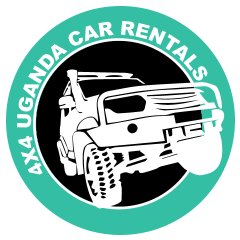Driving in Uganda: Everything You Need to Know
Driving in Uganda: Everything You Need to Know, Driving in Uganda offers an adventurous way to explore the country’s stunning landscapes, vibrant wildlife, and cultural treasures. However, navigating Uganda’s roads can be challenging due to varying road conditions, traffic regulations, and local driving customs. This guide will provide essential information and practical tips for a safe and enjoyable driving experience in Uganda.
-
Vehicle Rental and Preparation # Driving in Uganda: Everything You Need to Know
1.1. Choosing a Vehicle
 4×4 Vehicles: Opt for a 4×4 vehicle, especially if you plan to visit national parks or drive on unpaved roads. These vehicles handle rough terrain and off-road conditions better than standard cars.
4×4 Vehicles: Opt for a 4×4 vehicle, especially if you plan to visit national parks or drive on unpaved roads. These vehicles handle rough terrain and off-road conditions better than standard cars.- Rooftop Tents: Consider renting a vehicle equipped with a rooftop tent for a self-drive safari. This setup provides flexibility and comfort while camping in Uganda’s diverse environments.
1.2. Vehicle Inspection
- Pre-Rental Checks: Before accepting the vehicle, inspect it thoroughly for any existing damage, ensure all necessary equipment is present, and confirm that it is in good working condition.
- Emergency Kit: Ensure the vehicle is equipped with an emergency kit, including a first-aid kit, spare tire, jack, and basic tools.
-
Driving License and Documentation#Driving in Uganda: Everything You Need to Know
2.1. Driving License
- International Driving Permit (IDP): An IDP is required along with your national driving license. It translates your license into multiple languages and is essential for driving in Uganda.
- Local Driving Laws: Familiarize yourself with local traffic laws and regulations. Uganda drives on the left side of the road.
2.2. Vehicle Documentation
- Rental Agreement: Carry a copy of your rental agreement, including insurance details. This document is essential if you need to prove your rental status or coverage.
- Insurance: Verify that your rental includes comprehensive insurance. Check the coverage details for potential risks such as accidents, theft, and vehicle damage.
-
Road Conditions and Navigation#Driving in Uganda: Everything You Need to Know
3.1. Main Roads vs. Rural Roads
- Main Roads: Major roads connecting cities and towns are generally in good condition but can be busy, especially near urban areas.
- Rural Roads: Expect rough and unpaved roads in rural and remote areas. Roads can be muddy and challenging, particularly during the rainy season. Drive cautiously and be prepared for sudden changes in road conditions.
3.2. Navigation Tools
- GPS and Maps: Use a GPS device or smartphone with Google Maps for navigation. Download offline maps for areas with limited mobile coverage.
- Local Advice: Seek local advice or consult with your rental agency about road conditions, especially if traveling to remote areas or national parks.
-
Traffic Laws and Regulations
4.1. Speed Limits
- Urban Areas: Speed limits in urban areas are typically 50 km/h (31 mph).
- Rural Roads: On rural roads and highways, speed limits are generally 80 km/h (50 mph) but can vary. Always observe posted speed limit signs.
4.2. Road Signs and Signals
 Traffic Signs: Familiarize yourself with local road signs and traffic signals. Some signs may differ from those in other countries.
Traffic Signs: Familiarize yourself with local road signs and traffic signals. Some signs may differ from those in other countries.- Roundabouts: Approach roundabouts with caution, giving priority to vehicles already in the roundabout.
4.3. Alcohol and Driving
- Legal Limit: The legal blood alcohol concentration limit is 0.08%. Avoid drinking and driving to ensure safety and compliance with local laws.
-
Safety and Etiquette
5.1. Safety Precautions
- Seat Belts: Always wear seat belts and ensure all passengers do the same.
- Avoid Night Driving: Driving after dark can be risky due to poor road conditions and the potential for encountering pedestrians and animals on the road. Plan your travel to avoid night driving when possible.
5.2. Wildlife and Pedestrians
- Wildlife: Watch for wildlife crossing roads, especially near national parks. Slow down and remain vigilant.
- Pedestrians: Be cautious around pedestrian areas and market zones. Pedestrians may not always use designated crossing points.
-
Emergency Procedures
6.1. Handling Breakdowns
- Contact Rental Agency: If you experience a breakdown, contact your rental agency immediately for assistance.
- Emergency Numbers: Keep a list of local emergency numbers and the nearest embassies or consulates in case of serious issues.
6.2. Medical Emergencies
- Health Precautions: Carry a basic first-aid kit and any necessary medications. Familiarize yourself with the locations of local health facilities and emergency services.
-
Cultural Considerations
7.1. Local Customs
- Respect Local Customs: Be mindful of local customs and driving etiquette. Politeness and patience are appreciated in interactions with other drivers and pedestrians.
7.2. Community Engagement
- Local Interactions: Engage respectfully with local communities and ask for directions or advice when needed. Ugandans are generally friendly and helpful to visitors.
Driving in Uganda can be a rewarding experience, offering unparalleled access to the country’s natural beauty and cultural richness. By preparing adequately, understanding local driving laws, and practicing safety and respect on the roads, you can ensure a smooth and enjoyable journey. Embrace the adventure, and let Uganda’s diverse landscapes and vibrant wildlife captivate you.
Enjoy your driving adventure in Uganda, and explore the country’s stunning landscapes and wildlife with confidence!
